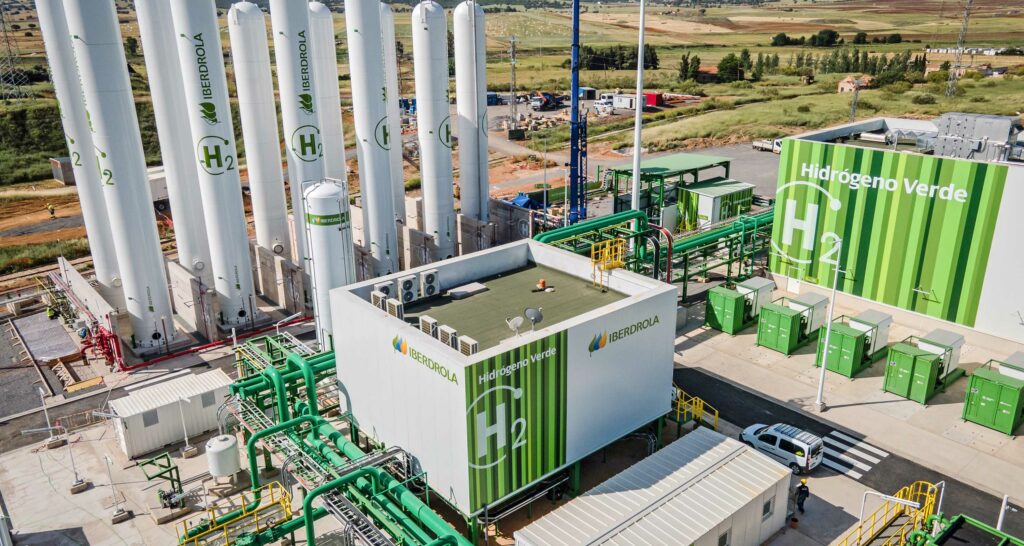Engineering challenges: technological missing links in climate action
As the IEA warns, most of the reductions in emissions needed to achieve net zero rely on technology that is not yet commercially mature. While tech will provide no magic bullet, its rapid development to scale up decarbonization is essential. What are the technological gaps we must focus on filling now?
Climate — Global

Climate action is at a critical time. Many commercially ready technologies are available to enable the transition to net-zero energy today. Yet, the pace of the clean energy transition has, so far, not been rapid enough to achieve the Paris Agreement goal to limit global temperature rise to 1.5°C.
There is an urgency to understand what the main gaps are in clean energy technologies for more rapid decarbonization. In search of missing links, the following topics currently dominate discussion online:
- carbon capture, utilization, and storage (CCUS)
- “powerfuels,” including green hydrogen and ammonia
- energy storage, to firm up variable renewable energy
- digitization for greater energy efficiency and utilization
These topics reflect and support key areas for energy decarbonization in the race to net zero, so let’s delve into each.
Clean coal and gas through CCUS
Many cities and towns globally are still powered by fossil fuel power plants. To completely and immediately abandon these assets (which account for tens of thousands of gigawatts) may be impossible and wasteful in the short term. The question is: can CCUS be deployed quickly to decarbonize these assets?
Carbon capture has been in development for the last five decades. To date, over 70% of carbon capture’s applications have been in oil and gas recovery projects, according to a report from the Institute of Energy Economics and Financial Analysis.
Yet, only 300 million tonnes of carbon have been captured worldwide – a drop in the ocean compared to what is required to achieve the Paris Agreement goals. The technology is also known to face major challenges economically and requires significant infrastructure investments in pipelines and storage facilities, directly in competition with investments in other technologies and solutions.
Powerfuels
The Global Powerfuels Alliance defines powerfuels as “synthetic gaseous or liquid non-biofuels that draw their energy content from renewable electricity.”
Powerfuels include hydrogen, synthetic methane and propane, and synthetic liquid fuels and chemicals. The feedstocks used to produce powerfuels can come from primary fossil fuels (coal, wood, gas, oil) and their derivatives – including waste such as plastics and used tyres.
Powerfuels such as green hydrogen and ammonia can help decarbonize sectors that are hard to electrify, such as aviation, maritime transport, and industrial manufacturing processes in steel, cement, and chemicals.
The production of powerfuels, however, relies on an energy-intensive conversion process, requiring the supply of thousands of gigawatts of extra renewable electricity. Investing in prolonging the fossil fuel lifeline when energy access and energy poverty are yet to be solved can be controversial. A similar moral and practical paradox exists in the food-to-biofuel debate.
Therefore, the use of powerfuels should prioritize hard-to-abate sectors and be produced from waste where possible, thereby yielding the greatest economic, social, and environmental benefits.
With more than 80% of global energy still being supplied by fossil fuels, both CCUS and powerfuels are technologies to help decarbonize fossil fuels and industrial sectors that are hard to electrify, treating effects rather than the root cause. In this context, opportunity costs of alternative options (for example, renewable energy and energy efficiency) should not be neglected in the investment and decision-making processes.
Rapid scaleup of renewable energy including solar and wind
With that background, let’s focus on clean electricity generation – that is, renewable energy.
The recent rise in gas and oil prices has seen solar and wind gain greater cost advantages, as well as a heightened role in supporting energy security. But given their intermittency, grid firming capacity and grid flexibility need to be enhanced. Energy storage is a mature and key grid firming technology that can help balance the variability of renewable energy to minimize investment requirements on the grid and enhance supply reliability.
As a primary energy source, renewable electricity needs to be significantly scaled up to achieve the Paris goals. Such a scaling up will also support the growth of the sustainable economy globally, which will help to reduce the need for CCUS and support the production of powerfuels to decarbonize the hard-to-abate sectors. The need for speed will also favor wind and solar, the construction time of which is around one third of that for equivalent hydro, geothermal, and nuclear power generation.
But how much renewable electricity will we need to decarbonize the electricity grid, industry, transport, and the built environment? IEA’s Roadmap for Net Zero by 2050 gives a pathway for rapidly scaling up solar and wind this decade, including a more than tripling of the amount installed annually by 2030 compared with 2020. Rooftop solar and more efficient small-scale wind turbines, such as tulip turbines, could help to achieve net zero at the district and municipality level. Localized energy systems are particularly cost competitive and efficient. They can provide greater energy access and alleviate energy poverty for remote and rural communities, helping to achieve the Sustainable Development Goals.
Reducing energy intensity through smart technologies and energy efficiency
Energy efficiency and demand management is considered as a “no-regrets” option and can help save hundreds of billions of dollars in new generation and grid investment. Smart technologies and solutions can help industries, businesses, and consumers use and manage their energy consumption more efficiently without putting any extra burden on their operation or daily life.
Energy efficiency has the potential to reduce emissions globally by 40%, according to a McKinsey study. Along with more efficient lighting, appliances, and products, digitization and demand-side technologies are key emerging technologies to help realize this vast potential. In this context, digitization refers to using smart hardware and software to better gather and utilize data to enable:
- smart data and analytics
- improved control and automated systems for industry
- building and home energy management systems
- smart grids
- smart cities
- advanced manufacturing
Like electric vehicles and battery storage, demand-side modular technologies (such as battery-to-grid, modular nuclear, and hydrogen or ammonia fuel cells) can potentially be the wildcard technologies. They can improve system efficiency and flexibility, further disrupting the current centralized industry and infrastructure. Aside from technology maturity, the diffusion of these technologies and interventions will require overcoming economic, institutional, and behavioral barriers. This is particularly true in the buildings and transport sectors, as experienced in many parts of the world.
Beyond technology
A Climateworks and ASEAN Centre for Energy study highlighted some of the economic and institutional barriers and challenges in achieving energy transition and net-zero goals.
These include market distortions and inefficiencies due to fossil fuel subsidies, and inadequate pricing of carbon externalities. There is also a lack of financial incentives and few examples of viable business models to attract renewable energy and energy efficiency investments. In addition, there is a need for greater grid capacity and connections to accommodate more renewable energy and flexibility in the electricity network. Human capacity for action and implementation can also be a significant constraint in determining how fast the energy transition could happen.
The need for critical minerals and the global supply chain presents another challenge. According to Asia Europe Clean Energy (Solar) Advisory (AECEA), China’s solar photovoltaic (PV) manufacturing capacity is estimated to reach 500 gigawatts by the end of 2022, making up 80% of global solar PV supply. This is estimated to grow to 95% in the coming years, according to the IEA Special Report on Solar PV Global Supply Chains. Rapidly building up the global supply chain will help to further bring down the costs of technologies. It’s also critical to support global energy security – one of the lessons learned from the EU’s reliance on the supply of Russian gas.
It is likely that all solutions will be needed to achieve the UN Secretary-General’s goal to build a coalition to achieve net-zero emissions by 2050. Ultimately, the less resource and energy-intensive technologies with large commercial potential hold the greatest promise for the sustainable energy transition, and therefore should be prioritized. Global collaboration on the technology supply chain and clean technology research and development will be critical to enhance the accessibility and availability of clean technologies. This calls for leadership and collective efforts from both the Global North and South to bring together engineers, financiers, entrepreneurs, and energy system experts to drive the implementations and applications for decarbonization.





